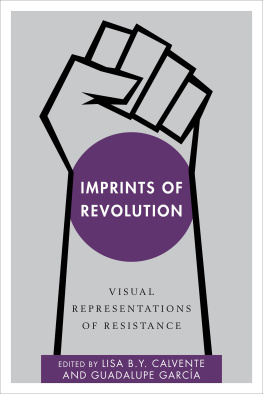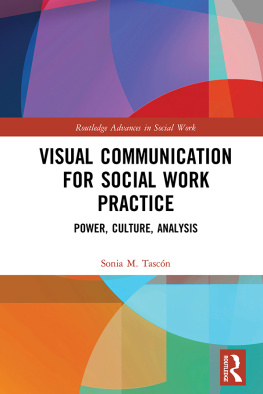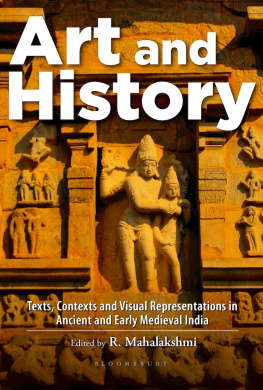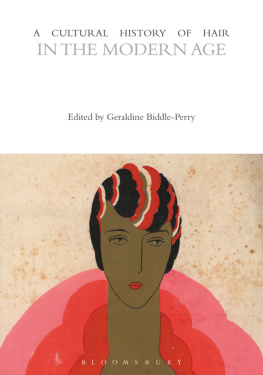Imprints of Revolution
Disruptions
Disruptions is a series that interrogates and analyses disruptions within and across such fields and disciplines as culture and society, media and technology, literature and philosophy, aesthetics and politics.
Series Editor
Paul Bowman, Reader, Cardiff School of Journalism, Media and Cultural Studies, Cardiff University, UK
Editorial Review Board
Benjamin Arditi, Professor of Politics, National University of Mexico, Mexico
Rey Chow, Anne Firor Scott Professor of Literature, Duke University, USA
Simon Critchley, Hans Jonas Professor of Philosophy, The New School, New York, USA
Catherine Driscoll, Associate Professor of Gender and Cultural Studies, The University of Sydney, Australia
Ben Highmore, Professor of Cultural Studies, University of Sussex, UK
Richard Stamp, Senior Lecturer of English and Cultural Studies, Bath Spa University, UK
Jeremy Valentine, Reader in Media, Culture and Politics, Queen Margaret University, Edinburgh, UK
Titles in Series
Bearing Society in Mind: Theories and Politics of the Social Formation , Samuel A. Chambers
Open Education: A Study in Disruption , Pauline van Mourik Broekman, Gary Hall, Ted Byfield, Shaun Hides and Simon Worthington
What Lies Between: Void Aesthetics and Postwar Politics , Matt Tierney
Martial Arts Studies , Paul Bowman
Living Screens: Melodrama and Plasticity in Contemporary Film and Television , Monique Rooney
Word: Divine, Dissonant and Digital , Mariam Motamedi Fraser
Culture and Eurocentrism , Qadri M. Ismail
Against Value in the Arts and Education , edited by Sam Ladkin, Robert McKay and Emile Bojesen
Imprints of Revolution: Visual Representations of Resistance , Lisa B. Y. Calvente and Guadalupe Garca
Disrupting Maize: Food, Biotechnology and Nationalism in Contemporary Mexico , Gabriela Mndez Cota
Imprints of Revolution
Visual Representations of Resistance
Edited by Lisa B. Y. Calvente and Guadalupe Garca

London New York
Published by Rowman & Littlefield International Ltd
Unit A, Whitacre Mews, 26-34 Stannary Street, London SE11 4AB
www.rowmaninternational.com
Rowman & Littlefield International Ltd. is an affiliate of Rowman & Littlefield
4501 Forbes Boulevard, Suite 200, Lanham, Maryland 20706, USA
With additional offices in Boulder, New York, Toronto (Canada), and Plymouth (UK)
www.rowman.com
Selection and editorial matter 2016 by Lisa B. Y. Calvente and Guadalupe Garca
Copyright in individual chapters is held by the respective chapter authors.
All rights reserved . No part of this book may be reproduced in any form or by any electronic or mechanical means, including information storage and retrieval systems, without written permission from the publisher, except by a reviewer who may quote passages in a review.
British Library Cataloguing in Publication Data
A catalogue record for this book is available from the British Library
ISBN: HB 978-1-78348-505-5
PB 978-1-78348-506-2
Library of Congress Cataloging-in-Publication Data
Names: Calvente, Lisa B. Y., author. | Garca, Guadalupe, 1975 author.
Title: Imprints of revolution : visual representations of resistance / Lisa B. Y. Calvente and Guadalupe Garca.
Description: Lanham : Rowman & Littlefield International Ltd, 2016. | Series: Disruptions | Includes bibliographical references and index.
Identifiers: LCCN 2015050985 (print) | LCCN 2016011072 (ebook) | ISBN 9781783485055 (cloth : alk. paper) | ISBN 9781783485062 (pbk. : alk. paper) | ISBN 9781783485079 (Electronic)bjects: LCSH: Revolutions. | Art and revolutions. | Social change.
Classification: LCC HM876 .C35 2016 (print) | LCC HM876 (ebook) | DDC 303.4dc23
LC record available at http://lccn.loc.gov/2015050985
 The paper used in this publication meets the minimum requirements of American National Standard for Information SciencesPermanence of Paper for Printed Library Materials, ANSI/NISO Z39.48-1992.
The paper used in this publication meets the minimum requirements of American National Standard for Information SciencesPermanence of Paper for Printed Library Materials, ANSI/NISO Z39.48-1992.
Printed in the United States of America
Introduction
Decolonizing Revolution through Visual Articulations
Lisa B. Y. Calvente
In historical agitation, only the word Revolution dominates the customary confusion and carries with it the promise that answers the unlimited demands of the masses.
Georges Bataille, The Notion of Expenditure (1933)
Haiti is the country where Negro people stood up for the first time, affirming their determination to shape a new world, a free world.
Aim Csaire, An Interview with Aim Csaire (1967)
W ith the words Liberty or Death inscribed onto the newly imaged blue and red flag, Jean-Jacques Dessalines led the colonized and enslaved peoples army to defeat the French troops on the island of Saint-Domingue. The removal of the white from the tricoloured red, white, and blue French flag and the replacement of the initials R. F. that stood for the Rpublique Francaise with the affirmation Liberty or Death became the visual representation of a new becoming for the former island of Saint-Domingue and its inhabitants. The flag, once a symbol of European enlightenment, modernity, and humanity, became emblematic of an ongoing formation of liberated modernity and black subjectivity. By 1805, less than two years after Toussaint LOuvertures death, Jean-Jacques Dessalines established the independent nation of Hayti, an Arawak name for high land. In addition, regardless of ancestry or phenotype, Dessalines constituted all of Haytis citizens both free and black.
The materialization of the Haitian Revolution (17911804) demonstrated that European enlightenment was not in fact universal, and, if it was, universality was not intended for those who existed under slavery and colonial rule. As Robin Blackburn states, Haiti was not the first independent American state but it was the first to guarantee civic liberty to all its inhabitants. Through Haitis constitution, the discourse of revolution was articulated to colonialism, slavery, and blackness, which was reserved solely to the universal politics of European enlightenment prior to the revolt on the island. According to Stuart Hall, the process of articulation illustrates the ways in which discourses are connected, formed, and transformed under particular material conditions that enable social change. The significance of articulation is the disruption of history with the voices and actions of those who are silenced and defined as silent. It is within this disruption and articulation of history that new cultural formations, systems of belonging, and subjectivities arise.
Revolution as a discursive formation marks how Western modernity as a project both created and maintained disciplinary and regulatory practices that were necessarily tied to its colonization endeavors. Discourses of revolution also underscore the slippages and excesses, embodied resistances, to these hegemonic formations that aimed to maintain and strengthen colonial power relations. Haiti and its revolution symbolize these excesses of resistance. The Haitian Revolution marked a conjunctural moment where decolonization was successfully practiced. As the impetus of a decolonization project, the Haitian Revolution actively called into question the colonial relationship of which the modern world is derived.
The emergence of the early modern state coincides with the expansion of overseas exploration that began in the fifteenth century, which reconfigured existing power relations between empires. New technologies made possible the initial contact and exchange between people who have never encountered each other throughout the globe. This early form of globalization, inspired by the tropes of capitalismprivatization and capitalestablished violence and terror as foundational components of territorialization. Thus, first contact and colonialism emerge and encompass every thing founded through these encountersland, resources, and peopleas territorial gain. Modernity as a European project necessarily relied upon the colonial relationship to constitute itself in each and every aspect of political, economic, and social life.
Next page














 The paper used in this publication meets the minimum requirements of American National Standard for Information SciencesPermanence of Paper for Printed Library Materials, ANSI/NISO Z39.48-1992.
The paper used in this publication meets the minimum requirements of American National Standard for Information SciencesPermanence of Paper for Printed Library Materials, ANSI/NISO Z39.48-1992.